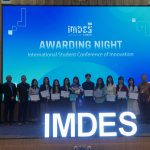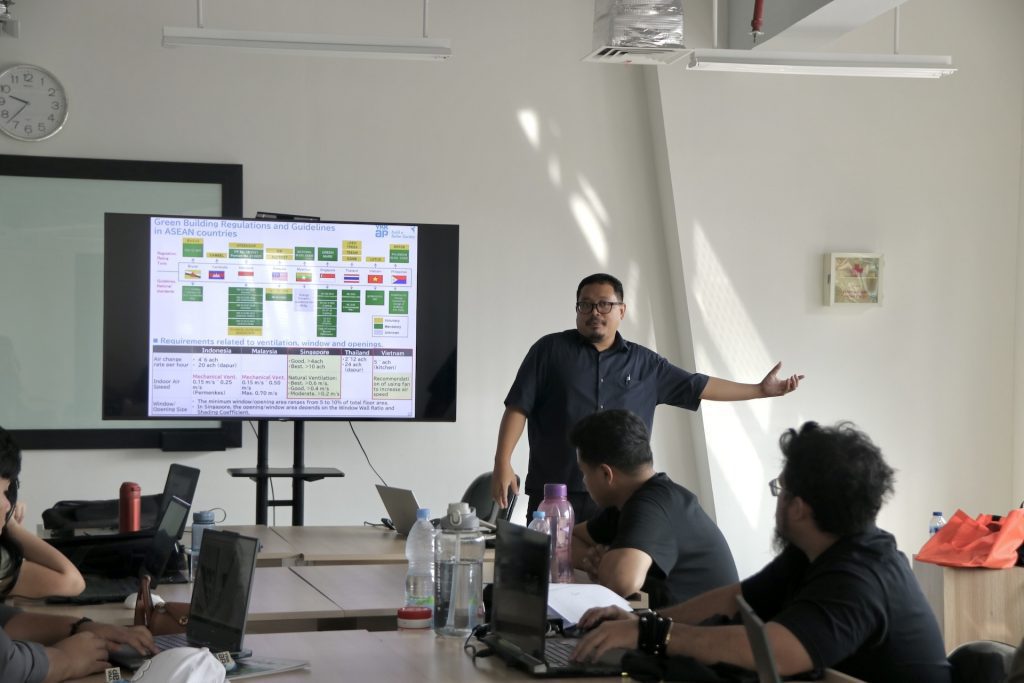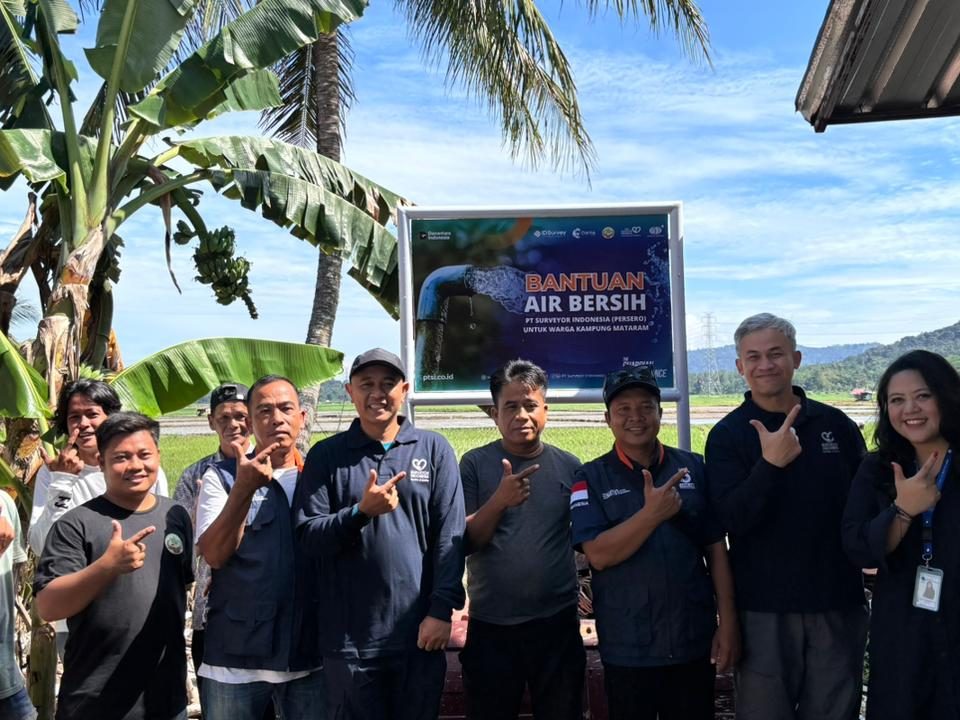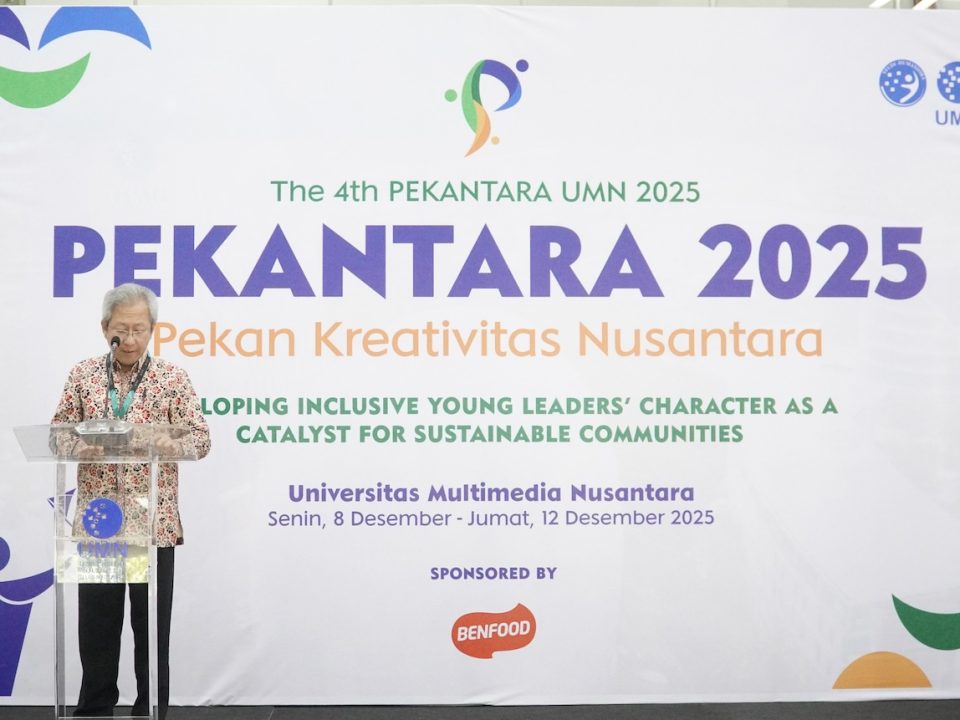
IMDES 2025: Creating Connection: Intelligent Design for a Sustainable Future
May 30, 2025
UMN Rectorate Holds a Warm Discussion with Students
May 30, 2025
Guest Lecture by PPAr Dinarasumberi featuring Andhang R. Trihamdani (Doc. UMN)
Tangerang—PPAr Universitas Multimedia Nusantara (UMN) held a guest lecture with Andhang R. Trihamdani as General Manager on Thursday, May 15, 2025. The theme was “Effective Window Design for Healthy and Energy-Efficient Buildings.” This guest lecture aimed to provide more profound knowledge to PPAr UMN students.
Andhang R. Trihamdani is a researcher specializing in building design and sustainable design. During this event, Andhang attended the PPAr UMN guest lecture and provided detailed explanations about window design and healthy buildings.
“We all see window products as identical; visually, they appear identical. Typically, we focus on the window frames and materials, but that’s only from the outside. In reality, window products vary in performance, and these differences are not visible to the naked eye,” said Andhang.
Windows come in various types, such as sliding windows, hanging windows, casement windows, pivot windows, and many others. For Andhang, different window types also have different wind loads. This needs to be considered in building design and calculations.
“How do we determine the wind load design? We need to know the wind pressure or how many pascals the wind is. First, we need to define the building height, the base wind speed, and these regulations follow the region,” Andhang added.
Andhang discussed windows as part of building design and systems. According to Andhang, wall systems can be categorized into unitized and stick or knock-down systems, which are assembled individually and depend on project requirements.
“The curtain wall system mullion is a vertical element, and the back transom is a horizontal element. The mullion is designed with a vertical frame behind it, so we only see the lines between the glass panels, while the back transom is horizontal, and the frame appears as lines. This design can vary; some show all the frames, while others are frameless,” Andhang explained.
Andhang also discussed windows as a building system and green building regulations in ASEAN. Due to shared climatic conditions, ASEAN has similar regulations or systems. According to Andhang, these regulations are issued by the local government or Non-Governmental Organizations. In Indonesia, the regulations are managed by the Ministry of Public Works and Housing (PUPR).
“Regarding air change ventilation, several factors affect thermal comfort, including clothing, air temperature, wind speed, and metabolic state. Currently, Indonesians always use air conditioning everywhere, and some people cannot live without it,” Andhang said.
For Andhang, if we want to maintain a comfortable temperature, we can avoid air conditioning. YKK is actively researching hypercooling and active cooling to study how people living in tropical regions can still use air conditioning wisely.
“How can we reduce AC usage? We can divide the room into areas where active cooling and passive cooling are activated. One area can have AC with a design where the AC air doesn’t escape, while the other area doesn’t have AC but still maintains a comfortable temperature,” explained Andhang.
Therefore, Andhang considers windows and ventilation crucial elements in a building. When installing ventilation or windows, we must calculate the proper direction, and according to Andhang, the higher the windows or ventilation, the better and more stable the results will be.
By Rachel Tiffany Tanukusuma | UMN News Service
English translation by Levina Chrestella Theodora
Kuliah di Jakarta untuk jurusan program studi Informatika| Sistem Informasi | Teknik Komputer | Teknik Elektro | Teknik Fisika | Akuntansi | Manajemen| Komunikasi Strategis | Jurnalistik | Desain Komunikasi Visual | Film dan Animasi | Arsitektur | D3 Perhotelan , di Universitas Multimedia Nusantara.





